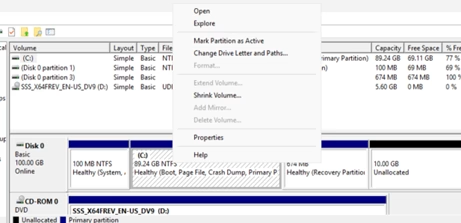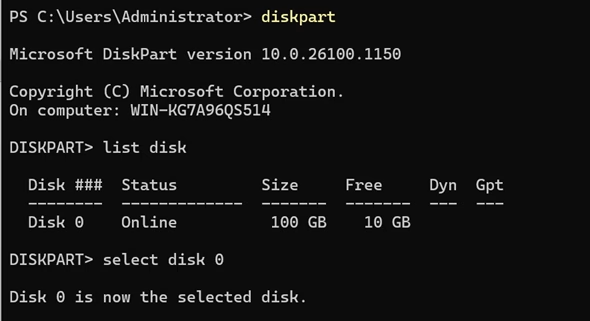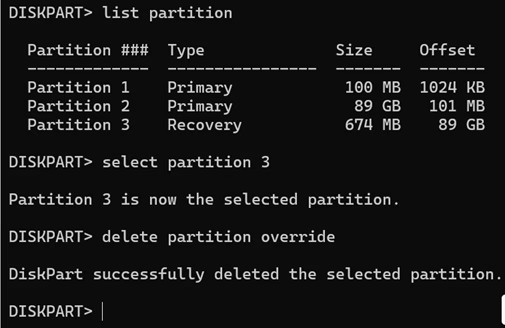When you have unallocated space that’s not adjacent to the C: drive, especially if a Recovery Partition is in between, Windows does not allow you to extend the C: drive using built-in tools like Disk Management or DiskPart.
Introduction
If you’re running low on space on the C: drive but notice that your unallocated space isn’t directly next to it—because a Recovery Partition is blocking it—this article walks you through how to fix that problem without third-party software.
Problem Overview
Below is a screenshot from my test environment, showing 10 GB of unallocated space, but the “Extend Volume” option is greyed out for the C: drive. The Recovery Partition is blocking the way:

Solution: Delete and Recreate the Recovery Partition (Advanced but Safe)
You can delete the Recovery Partition, extend the C: drive, and recreate the Recovery Partition later if needed.
3.1 Identify the Recovery Partition
Open Command Prompt (Admin) and run:
reagentc /info
Windows RE location: \\?\GLOBALROOT\device\harddisk0\partition3\Recovery\WindowsRE
That confirms which partition is the Windows Recovery Environment (WinRE).

3.2 Disable Windows Recovery Environment
Before deleting the partition, disable Windows RE:
reagentc /disable
This unregisters the recovery partition safely.
3.3 Delete the Recovery Partition Using DiskPart
Run the following commands:
diskpart
select disk 0
list partition
select partition X # ← Match with partition number from reagentc /info
delete partition override
exit
This removes the recovery partition.


3.4 Extend the C: Drive
Now that the unallocated space is adjacent to the C: drive, use either of the methods:
Using DiskPart or Using Disk Management GUI:
diskpart
select disk 0
select partition Y # ← Your C: partition
extend
exit
- Open Disk Management
- Right-click C: drive → Extend Volume

3.5 Re-enable Recovery Partition
After extending the drive, you may recreate the recovery partition by:
reagentc /enable
This allows Windows to recreate a recovery partition if required.
⚠️ Notes & Recommendations
- Backup First – You’re deleting a system partition. A snapshot or backup is strongly advised.
- Reset Features Lost Temporarily – Until the recovery partition is recreated, features like “Reset This PC” won’t work.
- Test Environment Preferred – Use this on test or non-production machines unless you’re an IT professional.
Conclusion
If you’re stuck with unusable unallocated space due to a recovery partition, this guide gives you full control to reallocate that space to the C: drive without third-party tools. Just be sure to understand the risks, back up your system, and recreate recovery features if needed.
